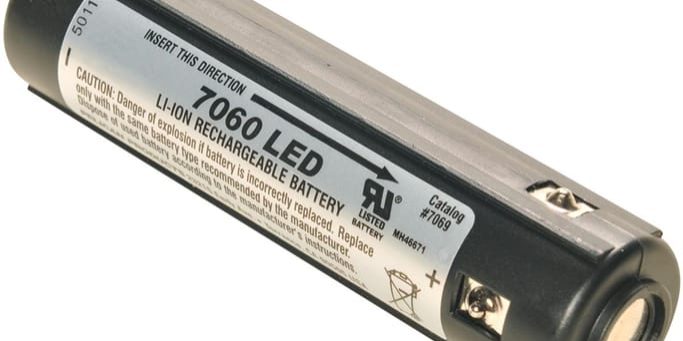The Homeland Defense and Security Information Analysis Center (HDIAC) was asked to provide state-of-the-art information on lithium-ion (Li-ion) pouch cell performance for North American manufacturers. The inquirer’s primary interests were the current capabilities of various types of batteries while keeping future technologies in mind. Research was conducted on identifying domestic manufacturers and supply chains and their national and international capabilities. Three domestic companies were found—Enersys, Enovix, and QuantumScape—and information on their Li-ion pouch cells was provided to the inquirer.
1.0 INTRODUCTION
Foreign supply chains and manufacturers of these Li-ion batteries dominated the population in this field. Figures 1 and 2 show the organizations with the highest number of patents for Li-ion batteries as well as the time scale for how many developing patents were directly related to Li-ion batteries each year. Although domestic manufacturers are listed, there is a possible foreign supply chain associated with them. As one of the parameters of this technical inquiry was to exclusively focus on domestic manufacturers with a domestic supply chain, batteries from those companies and foreign countries are not included. As a result, only three North American companies with Li-ion manufacturing capabilities are reviewed in this report—Enersys, Enovix, and QuantumScape. The information provided next is not all-inclusive but a summary of their Li-ion pouch battery capabilities.


1.1 ENERSYS
Enersys is a domestic, stored energy systems and technology provider for industrial applications. On October 28, 2013, they acquired Quallion LLC, a company that designed, fabricated, and manufactured state-of-the-art Li-ion cells, battery packs, and pouch cells. Quallion has had contracts developing new battery chemistries for the U.S. military, aerospace, medical, and automotive industries. Enersys has a pouch cell format that is competitive in performance with the typical can format but comes at an increased cost [2].
1.2 ENOVIX
Enovix is a leader in advanced silicon-anode, Li-ion battery development and production. Domestically owned and operated, Enovix is in the preproduction stages for leading mobile device batteries and electronic vehicle batteries. The company expects to produce 8 million cells annually by the end of the fiscal quarter of 2022 and plans to ramp up to a maximum manufacturing capability of 45 million cells per year. An extensive amount of research went into mitigating heat loss in their Li-ion batteries, as well as preventing their silicon from expanding, as that is a common issue with silicon-based anodes. Their batteries are intended for various products like batteries for smartwatches, augmented reality glasses, radios, cell phones, laptops, and future electronic vehicles [3].
1.3 QUANTUMSCAPE
QuantumScape, a domestic company based out of California, changed the fundamental chemistry of their batteries. Instead of Li-ion batteries, they developed lithium metal batteries and a battery whose supply chain consists of domestically abundant materials. The company deals in electronic vehicle batteries capable of operating efficiently between –30 °C and 60 °C and has a large amount of open-sourced literature on their products. QuantumScape is in a preproduction stage, with the goal of having their products commercially available in 2024–2025. They developed batteries capable of a 1000 Watt*hour/L energy density without any considerable degradation on cycle lives per depth of discharge. Over 800 discharges were performed on several batteries across several different lots that all had an individual maximum energy retention rate between 95% and 99% [4].
References
[1] Armistead, S. InnovationQ+ Visual Tool drawing, September 2021.
[2] Benulis, S. Personal communication. Enersys, Reading, PA, 27 August 2021.
[3] Hallmark, J. “Advanced Battery Production Showcase.” Enovix, Fremont, CA, July 2021.
[4] Udutha, P. “Investor Presentation.” QuantumScape, San Jose, CA, August 2021.
Bibliography
Glazier, S. L., J. Li, A. Louli, J. P. Allen, and J. Dahn. “An Analysis of Artificial and Natural Graphite in Lithium-ion Pouch Cells Using Ultra-High Precision Coulometry, Isothermal Microcalorimetry, Gas Evolution, Long Term Cycling, and Pressure Measurements.” Journal of the Electrochemical Society, vol. 164, no. 14, pp. A3545–55, https://doi.org/10.1149/2.0421714jes, 2017.
Goldman, A. R., F. S. Rotondo, and J. G. Swallow. “Lithium-Ion Battery Industrial Base in the U.S. and Abroad.” Institute for Defense Analyses, Alexandria, VA, DTIC accession no. AD1122151, Distribution A, December 2019.
Landi, B. J., M. Ganter, C. Schauerman, K. Crompton, A Leggiero, and J. Staub. “High-Capacity Cathode and Carbon Nanotube-Supported Anode for Enhanced Energy Density Batteries.” Rochester Institute of Technology, Department of Chemical Engineering, Rochester, NY, DTIC accession no. AD1045128, Distribution A, 7 September 2021.
U.S. Department of Energy. “The State of the DOE National Laboratories 2020 Edition,” 19 January 2021.


